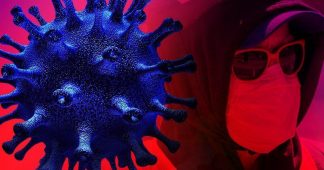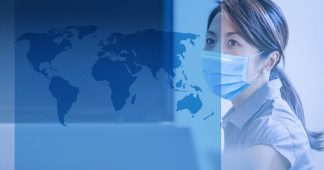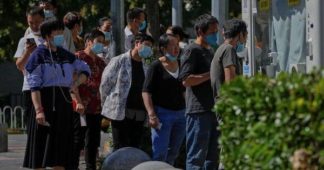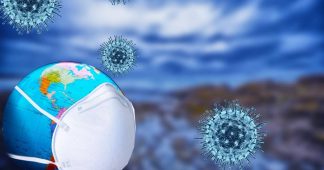Backgrounder: Optimisation of COVID-19 Response Measures in China
Over the past three years, the COVID-19 pandemic has wreaked havoc around the globe and posed enormous challenges to all countries including China. In 2020 when this public health emergency first broke out, the Communist Party of China (CPC) and the Chinese government made a decisive decision to categorise COVID-19 as a Class-B infectious disease that would be subject to the preventive and control measures for a Class-A infectious disease in accordance with the Law of the People’s Republic of China on the Prevention and Treatment of Infectious Diseases. The strict management of the disease has enabled China to pull through the difficult times when the virus was wreaking havoc and to withstand multiple global waves. It has also helped buy precious time for the research, development and application of vaccines and therapeutics and getting medical supplies ready, thus minimising the number of severe cases and mortality, and greatly protecting the health and safety of the people.
The global COVID-19 situation has changed significantly. In the light of the marked decline of the pathogenicity and virulence in Omicron and the steady rise of China’s capacity for medical treatment, pathogen detection and vaccination, China has taken the initiative to refine its COVID-19 response measures. We have adopted in an orderly fashion the 20 refined measures and 10 new measures, and decided to manage COVID-19 with measures against Class-B instead of the more serious Class-A infectious diseases, shifting the focus of our response from “stemming infection” to “protecting health and preventing severe cases”. We aim to better adapt our response measures to the new development in the epidemic and features of new mutations, effectively coordinate COVID-19 response and socioeconomic development, protect the safety and health of the people to the maximum extent possible, and restore normalcy to people’s work and life. The shift is science-based, timely and necessary.
I. Specific measures of China’s adjustment of COVID-19 response
Domestically, there are three major changes. First, identification of sources of infection. While COVID-19 was subject to the preventive and control measures for a Class-A infectious disease, infection cases were identified through compulsory nucleic acid testing among high-risk groups and mass testing in risky areas. After the policy adjustment, infection cases will be mainly detected in the course of treatment at medical institutions, via self-monitoring and through conducting testing among key groups of people. Second, management of sources of infection. Under previous rules, confirmed cases and suspected cases were quarantined and treated in isolation, while close contacts were required to receive epidemiological investigations and observation in isolation. After the optimisation, asymptomatic and mild cases can monitor their health at home. Third, optimisation of response measures at community level. Epidemic prevention and control at community level will mainly target at key locations, institutions and groups of people. Restrictions on other locations and other people’s movement will be reduced or even removed to minimise impacts on people’s life and work. Negative nucleic acid result and health code requirements for entering public places will be scrapped except for certain facilities such as nursing homes, medical institutions and schools. On-arrival testing and health code checks will end for domestic travel. Cross-regional coordination on tracing and managing personnel with potential spill-over risks will be scrapped. High-risk and low-risk areas will no longer be designated.
Externally, according to the Provisional Measures on Cross-border Travel to be effective on 8 January 2023:
First of all, policies on frontier health and quarantine will be adjusted. Inbound travelers will need to show a negative nucleic acid test taken within 48 hours prior to departure, without the need to apply for a health code from Chinese embassies or consulates. The health declaration form needs to be filled in as required by the customs. Those who have no issues to report in their health declaration and have been given regular customs inspection and quarantine clearance can enter China without being subject to quarantine. Closed-loop transfer and quarantine at designated facilities will no longer be applied to inbound travelers. Imported objects will not go through prophylactic disinfection, nor will cold-chain food be put under spot check.
Second, the flow of personnel will be facilitated. China will further refine arrangements for foreign nationals’ entry into China for such purposes as resumption of work, business, education, visiting relatives and family reunion and provide corresponding visa facilitation. Outbound tourism for Chinese citizens will be resumed in an orderly fashion. Limits on numbers of international flights will be removed with phased increases in flights number and refined distribution of flight routes.
Third, measures will be taken to guarantee freight transport at ports. China will gradually resume entry and exit of passengers by land and water on the basis of comprehensive assessment. For international cruise ships, a pilot programme will be carried out before the gradual opening up. Greater convenience will be provided for Chinese and foreign crew change in China.
China will continue working to make its COVID-19 response measures more science-based, targeted and responsive to the evolving COVID-19 situation, and better facilitate the safe and orderly cross-border travel of Chinese and foreign nationals.
II. Feasibility and prospect of China’s adjustment of COVID-19 response measures
1. China is well-positioned to refine its COVID-19 response measures thanks to its efforts in the past nearly three years. In responding to the outbreak of COVID-19, the CPC Central Committee with Comrade Xi Jinping at its core has always put the people and their lives above all else, and led the whole Party and people of all ethnic groups in concerted efforts in launching an all-out war to stop the spread of the virus. The health and safety of hundreds of millions of people have been protected to the greatest extent possible, and the impact on socio-economic development has been reduced to the minimum level.
Always committed to pursuing progress while ensuring stability, China has adjusted and improved its COVID-19 policies in light of evolving realities. On top of the nine guidelines for containment and treatment successively released, China has introduced 20 Rules and 10 New Rules respectively in response to the notable turn of situation. By doing so, China has held the strategic initiative firmly in its hand.
Giving top priority to people’s health and safety, China has well balanced COVID-19 response and routine treatment. All-out efforts have been devoted to acute, severe and critical cases, and a category-based approach has been applied to the treatment of key groups. Thanks to those measures, the numbers of infection and fatality in China have been kept at the lowest level globally.
With its commitment to a science-based approach to combating the virus, China has dedicated its efforts to the research and development of vaccine, rapid testing agent and medicine, launched the largest vaccination campaign worldwide, and worked to see to it that both traditional Chinese medicine and western medicine are used.
China has stayed committed to enhancing its capability for epidemic prevention and control, and emergency response. It has proceeded with reform and improvement of its disease prevention and control system, and increased the stockpile of resources for treating severe cases and of the supply of key medicine. Parallel emphasis has been put on both addressing immediate vulnerability and strengthening long-term protection.
Practice has fully proven that China’s COVID-19 policies are science-based and effective, which are compatible with the national realities. They have been recognised by the people and will stand the test of history.
2. China is fighting a prepared battle. The CPC and the Chinese government are taking a host of measures to protect the health and safety of the people. COVID-19 had been classified as a Category B infectious disease but treated as a Category A disease. Now it is truly treated as a Category B disease. This is only a change in ways of management, which in no way indicates a “laissez-faire”, “complete opening” or “lie flat” approach.
First, the features of the current virus variants and vaccination has demonstrated positive changes. Omicron has become the global dominant virus strain. Despite the large number of infections, the rate of serious cases and mortality stays at a low level. China has administered over 3.4 billion doses of COVID-19 vaccines nationwide, with vaccination and full vaccination coverage exceeding 92% and 90% of total population, respectively. The health and personal protection capacity of citizens have significantly improved.
Second, we have tried our best to raise the prevention and treatment capacity of the entire medical system and given equal emphasis to both severe case treatment and the provision of daily medical services. The tiered treatment and rescue system has been further improved. The capacity of community-level medical institutions has been strengthened. Additional fever clinics were established. Medical resources for severe cases have been boosted nationwide, with a daily resources dispatch system in place. The strength of community-level medical institutions have been better leveraged to administer tiered health management for the elderly with combined underlying conditions. Efforts have been made to continuously beef up emergency call answering capacity, emergency vehicle transfer rate and vaccination coverage for the elderly.
Third, we have boosted medical supplies through multiple channels. The production, distribution and supply of drugs have been boosted. Sufficient nucleic acid testing sites are retained at the community level for the convenience of the people. We have ensured that retail and online pharmacies have sufficient supplies such as antigen testing reagents so that the public can timely purchase necessary anti-pandemic materials online and offline.
3. China has full confidence in a smooth and orderly transition. All countries go through a period of adaptation when shifting gear in their COVID-19 policies, and China is no exception.
The current COVID-19 situation in China is within expectation and under control. Beijing was among the first to pass the peak of infection and production and life is gradually returning to normal. Relevant departments have made scientific assessments of possible infection peaks in other provinces, and are guiding localities in making necessary preparations such as increasing their medical resources and the provision of medical services. We in China are confident that we will be able to protect people’s health and prevent severe cases while accelerating the return of normal economic and social life for a complete and final victory against COVID-19.
III. Solidarity and cooperation are the most powerful weapons for the international community to overcome COVID-19
During the most trying period of COVID-19 prevention and control in China, the international community extended valuable support and assistance to China and the Chinese people. In the spirit of humanitarianism and multilateralism, China also provided support to the best of its capability for the international community to fight against the virus. China has actively offered humanitarian assistance to the international community, especially to countries and regions with weak COVID-19 response capacity. China shared COVID-19 prevention, control and treatment protocols with more than 180 countries and international organisations, dispatched 38 medical expert teams to 34 countries, and provided over 2.2 billion doses of vaccines for 120 plus countries and international organisations. By doing so, China has actively involved in the international cooperation against COVID-19, thus contributing to the global pandemic response and boosting hope and confidence for countries to overcome the pandemic.
At the same time, China has been open and transparent in sharing relevant data and information with the international community including the WHO. Following the recent adjustment of COVID-19 policies, relevant authorities in China shared COVID-19 genome sequence data from recent cases in the country through GISAID at the first opportunity. It is our hope that all sides take a science-based approach to ensure safe cross-border travel and keep global industrial and supply chains stable, so as to contribute to global solidarity against the pandemic and world economic recovery.
Political parties shoulder the weighty responsibility of improving people’s wellbeing, promoting national development and safeguarding world peace and stability. In April 2020, we issued a Joint Open Letter on closer international cooperation against COVID-19. As the pandemic has not yet come to an end, the Communist Party of China stands ready, in the spirit of the Joint Open Letter, for communication and exchanges with world political parties, your Party included, on promoting right perceptions, opposing the politicisation of public health issues, and fostering objective and friendly international public opinion concerning the pandemic. Through mutual learning and closer cooperation, we, world political parties, can promote the building of a Global Community of Health for All and contribute to world peace and development and the building of a human community with a shared future.
We remind our readers that publication of articles on our site does not mean that we agree with what is written. Our policy is to publish anything which we consider of interest, so as to assist our readers in forming their opinions. Sometimes we even publish articles with which we totally disagree, since we believe it is important for our readers to be informed on as wide a spectrum of views as possible.











